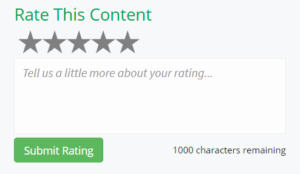How you define and measure the success of your website depends on what kind of relationship you want.
In a previous post I talked about the importance of getting your website ready for a relationship. But ready for what? Is it a long-term commitment, or something more casual? It hinges on the type of website you have and how it will help you execute on your purpose.
Websites are a part of almost every customer experience we have. But different types of websites invite different kinds of interactions. As a result the healthy measures of these relationships will vary. A good stat for one, may be lousy for another.
While you could get granular in categorizing websites, there are 3 main buckets:
- e-commerce & lead generation
- customer service
- informational
E-commerce & lead generation
If you have products and services you want to sell, your website has to do the same, whether your customers can buy online or not. Online research will be part of your customer’s decision-making process. Not-for-profits looking for donations fall into this category too.
The goal is for your website to be the first point of contact – sought out by people who have never heard of you, but who want what you offer. If you’re attractive, they’ll find you via an ad or word of mouth or keyword search.
All the content and functionality of your site should support getting the lead or the sale. You need to know your customers evaluation criteria: what questions do they need answered before they buy?
Healthy measures for sales-focused websites
- Increase in sales volume, and average sale size
- Increase in number of leads via a web form and phone calls (yes, you can track phone calls from your site)
- More time spent on critical path pages (that answer the questions required before buying)
- Greater portion of visits from organic search and growth in new visitors
- Decrease in shopping cart abandonment
- Positive reviews
Customer service
For a customer service or support site, you already have a relationship with someone. The ultimate goal is that they never need to go to your site. That’s unrealistic, of course, but when they do, that visit can make or break a relationship.
If they need support, your customer may be angry, confused, misunderstood, impatient, disappointed, etc. when they arrive on your website. You want to move them from a negative emotion to a positive one. And often it doesn’t matter if the issue gets fixed in the visit. Customers want to be heard and acknowledged. If they believe that you will make your best effort the experience will be satisfactory. (whether you do after the fact is equally important)
Get the customer to the answer as quickly as possible. Use plain language and an approachable, supportive tone. And for gosh sake, don’t bury your support content in FAQs. If it’s frequent, it’s important so don’t be lazy with your content!
Here is the irony with customer support online. If the customer resolves their situation but they need to hunt for the answer, or it’s difficult to understand, or they are not 100% sure it applies to them – they will rate their experience as poor and the relationship will be tarnished. Yes, even though they solved the issue. The experience matters. 
If you don’t already, ask for feedback on the support you’ve provided. 5-star ratings or ‘was this helpful’ are a low-key way to see how you are performing.
Healthy behaviours on customer service websites
- Decrease in frequency of return visits
- Fewer phone calls for questions the site answers
- Decrease in time on site and number of pages per session (trending together)
- Higher success rate with site search
- Improved feedback ratings
Informational
Whether it’s to educate, entertain or inspire – the goal of an information site is many happy returns. It doesn’t matter what format your content takes: text, video, infographics, etc.
Like a sales site, you want attract those who have never heard of you before, but who need answers you provide. However, you also want to keep them coming back for more. That takes a continuous supply of fresh, useful, shareable content.
Because your content is your product, pay close attention to what your customers want. Optimize for searchers and the search engines will follow.
Signs of healthy informational websites
- Steady growth in both returning and new visitors
- Time on page consistent with the volume of content (i.e. a 1000-word article would take 3-4 minutes to read)
- Increase in the number of articles viewed per session
- Increase in return frequency
- A greater breadth of keyword phrases that deliver traffic
- Increase in content interaction measures: downloads, video views, and social shares
Nurture the relationship
Broadly these 3 website types can be seen as serving different stages of a customer relationship, so some websites provide them all. As you cater to these varying needs, be aware that your objectives have changed. The tone of your content should adapt to successfully nurture the relationship.
I realize these 3 categories don’t cover everything, and the exact set of metrics depend on your content. Search engines and social media sites, for example, don’t fall cleanly into these buckets. For those, the site IS the organization. But for most, these categories have you covered. The crux is to understand the right things to measure so you can make decisions more effectively. And remember, the health of your website is also an indicator of the health of your customer relationships as a whole.
Does your website need a check-up? Get in touch with me to find out if your site is nurturing healthy relationships.
